My 2012 Boss 302 had barely cooled-off from its first drive home, when I made the first modification – opening-up the exhaust by removing the sound attenuation discs that were clogging the side pipes. I have had the car for two months now and have made a few other modifications, most of them just general appearance items and upgrades to cheap components that were no doubt specified by Ford to hit their target costs.
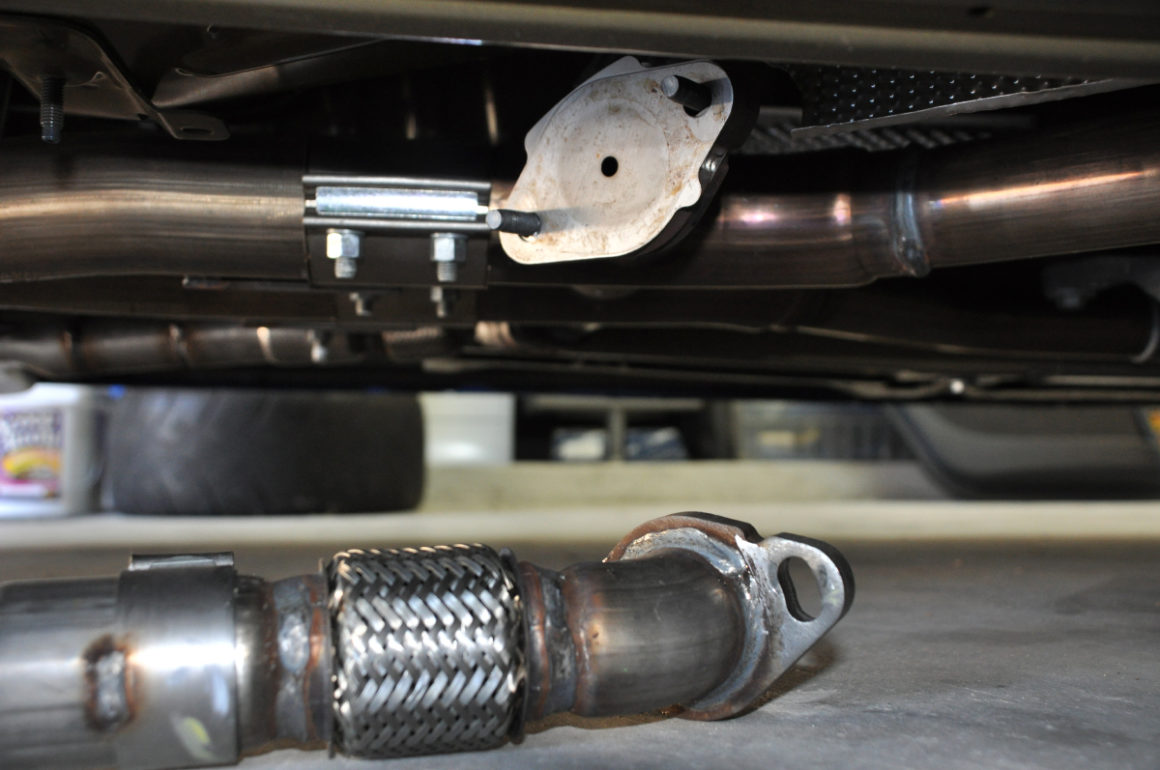
1. Airbag Sticker Delete
The first mod to any car that I own is the removal of the obnoxious airbag warning stickers from the sun visors (always present on the driver’s side, too, just in case you are strapping your baby in to drive and you look up to see that your baby should never ever drive an airbag-equipped car).
Cost: Free!
2. LED Lights

I replaced the map lights, trunk light, and license plate lights with LEDs from HIDguy.com. This made a huge improvement all around, especially with the interior lights. The first time I opened the door at night with the new lights, I thought I was being abducted by aliens. The intense white light looks modern and more appropriate for a brand new car, especially one which already has such nice instrument panel lighting. This mod is a must.
Cost: $43.
3. Alcantara* Shift Boot

In every other sports car that has ever been equipped with an Alcantara-covered steering wheel, at a minimum, the shift boot has also been Alcantara. For the Boss, Ford has the steering wheel covered in fake suede, the shift boot made out of fake leather, and the parking brake boot made out of some other kind of fake leather. Look, the collar should match the cuffs. It’s as simple as that. It isn’t as if any of this were actual leather, it is just three different kinds of fake leather. Why couldn’t they be the same? Was there a cost savings somewhere? Are there really grades of polyvinyl chloride fake leather?
Anyway, this bugged me, so I ordered a new shift boot and parking brake boot from www.redlinegoods.com, a Polish company. That’s right, to get a proper shift boot for my American car, I had to have one shipped from Poland. Well, good on them, because I am very pleased with their service and with the quality of their work. Instructions for installation are here, but I have added larger photos and a few extra comments here.

1. Remove the shift knob by rotating it counter clockwise. That’s all that Redline tells you, but you need to know something about that shift knob, or you are likely to get a hernia. It’s held on with blue Loctite. That’s right, Ford fitted this car with a Chinese transmission made from the melted-down pots and pans of dead dissidents and it’s almost certainly destined to fall apart faster than a student protest. But by God they don’t want that shift knob falling off. No sir.
Check the forums for ideas on how to remove the shift knob. You might get a musclehead friend or somebody on PCP who doesn’t feel pain. You also might try applying heat to break the Loctite bond. A rubber-strap oil filter wrench might work, too. I’m not going to tell you what I did, but let’s just say that now I have to order a new shift knob.

2. Open the storage compartment and then pull the center console trim piece by pulling up here. It will unclip easily. Unplug the traction control/hazard/trunk release connector and remove the trim piece, sliding the boot over the gear change lever.
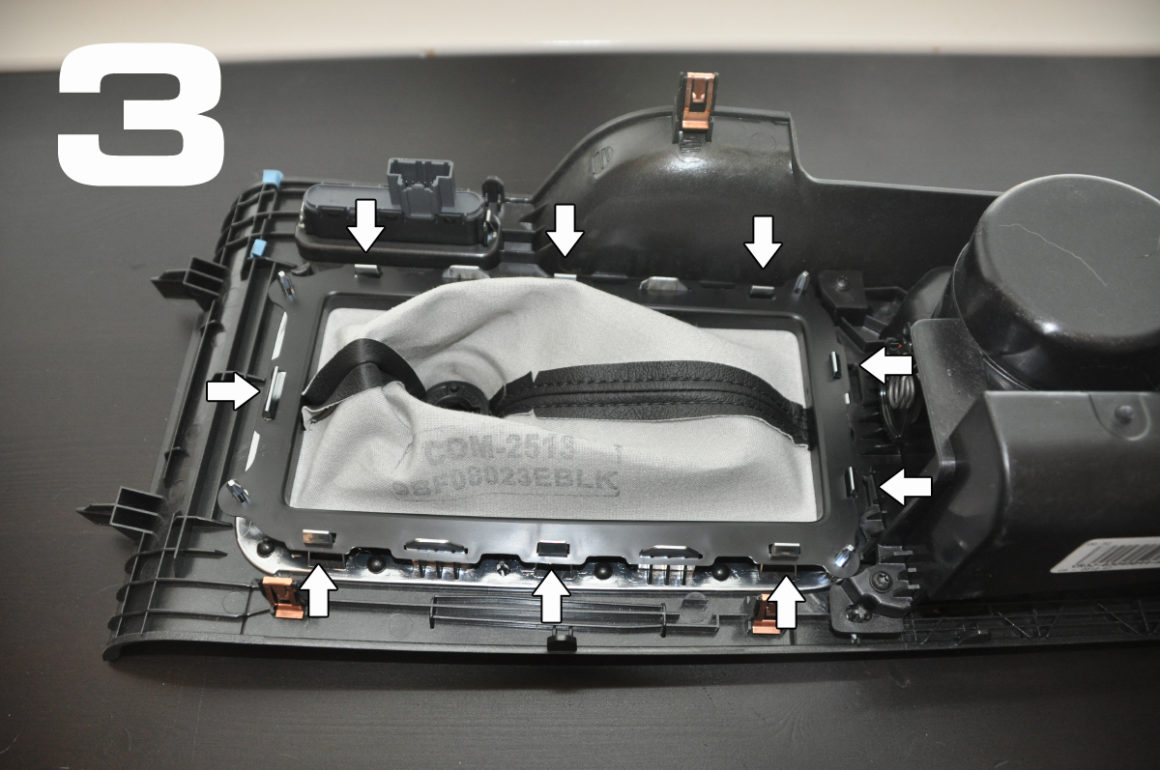
3. Remove the shift boot by unclipping the plastic mounting ring from the indicated clips.

4. Once the shift boot has been removed from the center console trim, use a putty knife, gasket scraper, or flathead screwdriver to remove to separate the shift boot from the plastic mounting ring.

5. I used a hot glue gun to glue the new boots to the plastic mounting rings. Because hot glue guns are dangerous, I had a safety officer present.

6. Detail. This is from the parking brake boot. In this area, the fitment can be very tight. In my case, the fabric was pulled so tightly at the bottom that it began to curl and it would not adhere. So, I made a 2-3mm cut in the fabric at the bottom, which was just enough to alleviate the tension and allow the fabric to lay flat and adhere to the plastic ring.
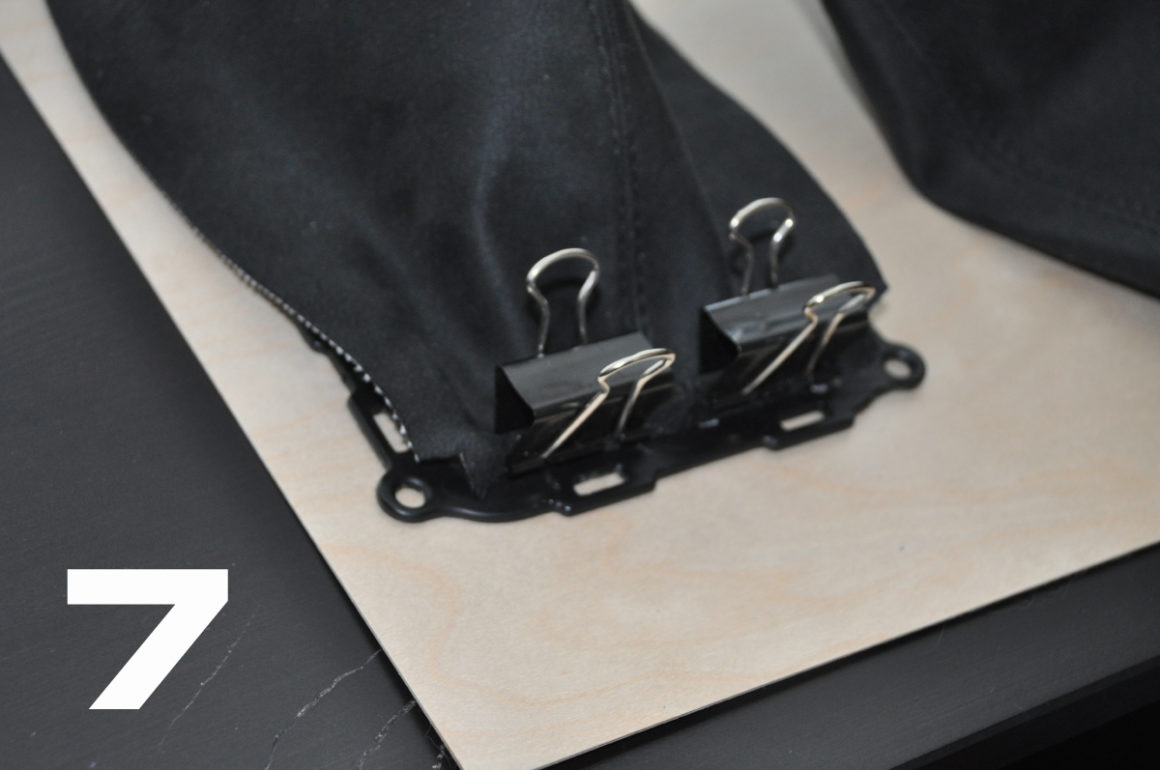
7. I used binder clips to clamp the boot to the plastic ring after I had applied the hot glue. They worked perfectly.

8. The finished boots!

I am very pleased with the quality of these pieces, but I have to say that the change is so subtle, that most will find this mod not worth the trouble. Also, the boots do not exactly match the color of the steering wheel. The boots are closer to black, while the steering wheel is a charcoal grey. In fact, to my eye, there is even a little bit of almost purple tint to the steering wheel cover. Anal retentive detail oriented people might try to wash or fade the material to get a closer match and folks with serious issues could just send the company a spare steering wheel and have them find the dye lot with the closest match. The original pieces didn’t match in color either, so I’m just happy that the material looks the same. The difference is subtle, but pleasing to me.
* I am using Alcantara generically, because it is easier than saying faux suede. Alcantara is a brand name and only the faux suede on the Recaro seats is actually Alcantara. Neither the steering wheel cover nor the boots provided by Redline Automotive Accessories Corp. are made from Alcantara.
Cost: $78
4. Window Tint

My car sits outside during the day, while I am at work and I live in Texas. That means window tint is mandatory. I took my car to Dave Angenend at Sideways Auto Salon and he tinted my windows with 30% Wincos film, a new Japanese product that features very high heat rejection, no RF interference, and a lifetime warranty.
Wincos-30:
- Visible Light Transmitted 34%
- Visible Light Reflected 5%
- Solar Energy Transmitted 22%
- Solar Energy Reflected 5%
- Solar Energy Absorption 73%
- IR Rejection 92%
- UV Ray Rejection 99%+
- Total Solar Energy Rejected 53%
Dave managed the up-sell, because he happened to catch me during the hottest Summer in Texas history. Worth every penny. The film works as advertised, is the perfect tint level for me, and looks beautiful on the car.
Cost: $375
5. License Plate

The standard Texas license plate is an atrocity. It looks like a 3rd-grader’s art project (don’t bother with the emails, 3rd-graders). Luckily, there are lots of options available for a modest fee. I selected this popular design, which fits nicely with the Boss livery.
Cost: $55
6. Stereo

The Boss comes with the base stereo and no option to upgrade from the factory. There is a head unit, AM/FM, CD, aux input and four 6×8 speakers. The bass is muddy and the sound is terrible. I took my car back to Dave Angenend at Sideways Auto Salon and he hooked me up with a nice mid-range upgrade. Dave said there was no reason to replace the head unit for sound quality reasons, until I moved even further towards high-end speakers (or if I wanted more functions and features). I like this, because the car retains a completely stock appearance, until you look in the trunk (more on that in a moment).
Easily, the most important upgrade was to replace the front speakers with Hybrid Audio Technology 6.5″ Imagine Series speakers. The front sound stage is now clean and crystal clear. Just like tires are ultimately the most important performance components of a car, the front speakers are the most important performance components of a car audio system. If you have a limited budget, put all of your money there.
A Diamond Audio 10″ subwoofer, and a Diamond Audio D300.4 (50 x 4 watt) amplifier round-out the modifications. The stock rear speakers are still driven by the head unit and are retained to provide fill, if so desired.
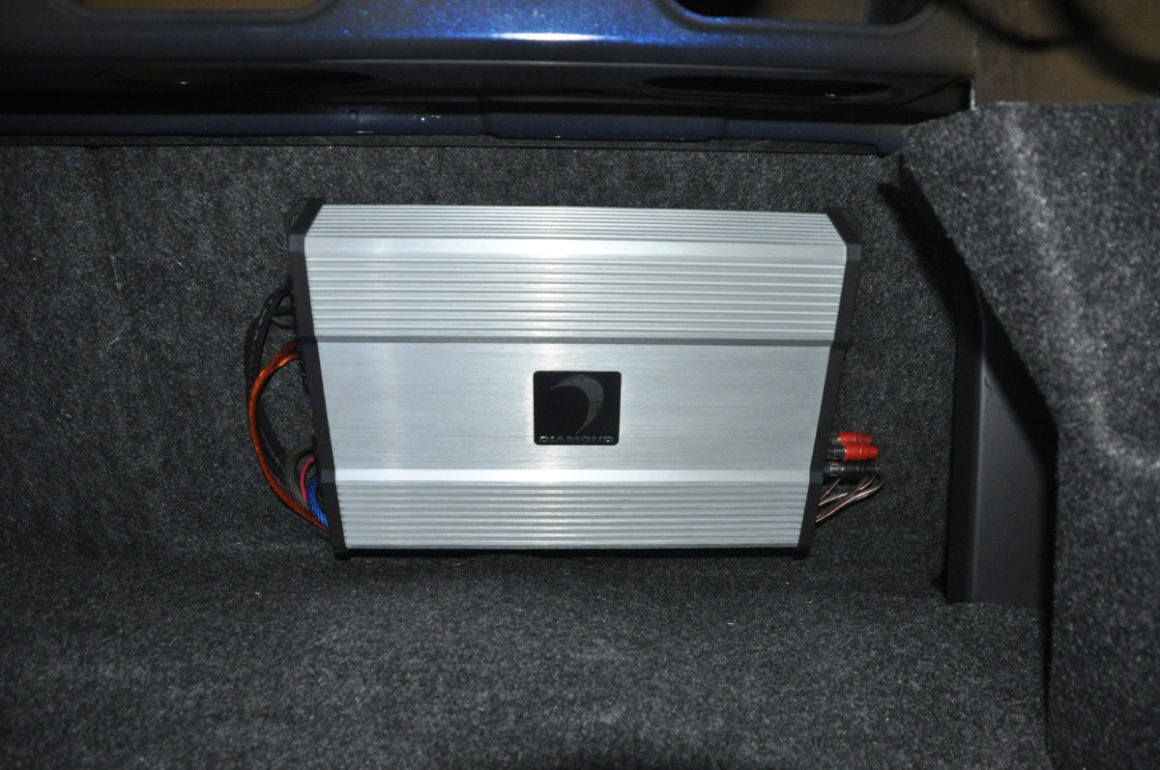
The amplifier is mounted on the back of the fold-down back seat. I admit that I didn’t specify where I wanted the amp and I don’t like it here. It’s fine for now, but I will most likely move it later.
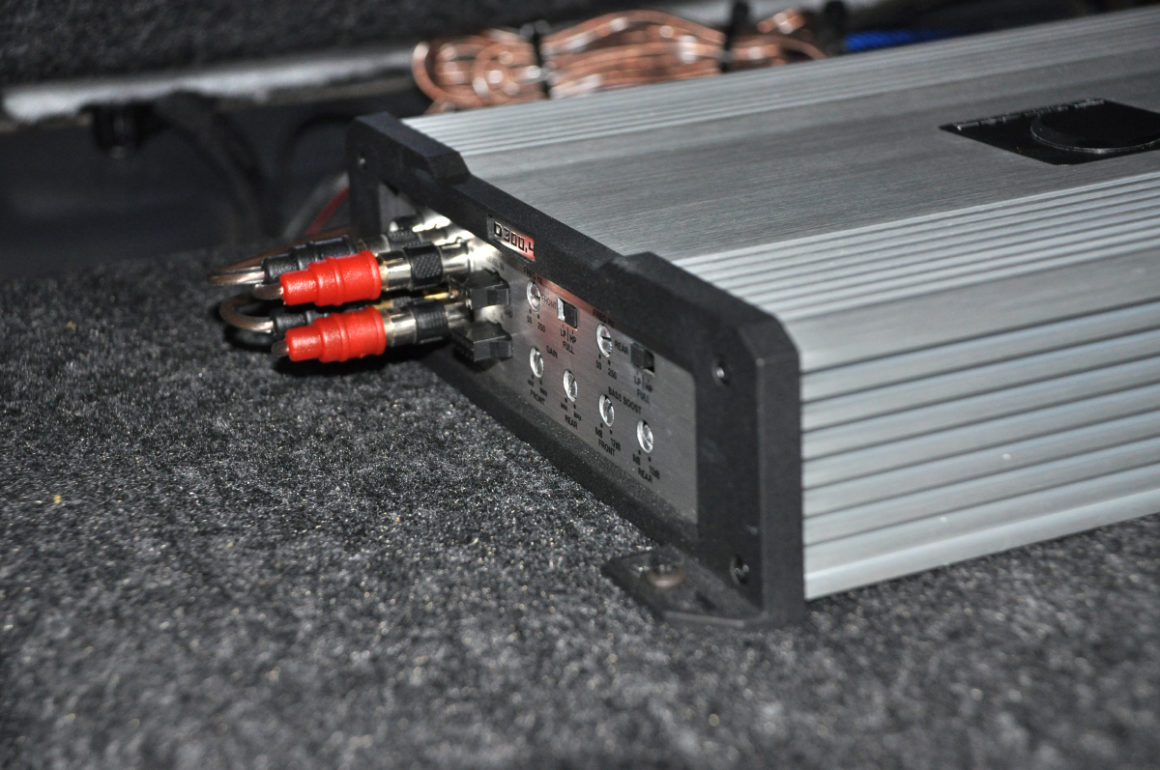
The seat has to be folded down in order to access the amplifier controls.

A subwoofer enclosure could have been built into the car, which would have looked better and taken less trunk space, but I specified an enclosure that could be easily removed for track days. To keep the enclosure from moving around the trunk, I made a couple of tethers that snap to the underside of the package shelf and then to the front of the sub box.
This system can be reproduced with more reasonably-priced components for just a few hundred dollars and it will still be a vast improvement over stock. I invested in higher-priced components and am very happy. The front speakers are especially pleasing to me. Clear, transparent, and they never seem to be straining at any frequency or volume level. Sometimes I catch myself grinning, not because of the music itself, but rather because of how well the speakers are handling the music. The sub is nice for really deep tones, but the stock rears can’t keep-up with the mid-bass. So, I will probably swap those at some point, put them on the current amp with the fronts and then give the sub its own amplifier. For now, this was far-and-away the most expensive mod, but for something I use every day, it was well worth it.
Cost: $1100
In the next chapter, I will install a few performance-oriented modifications.

Please pin, tweet, and share! Most importantly, let me know what you think in the comments below.




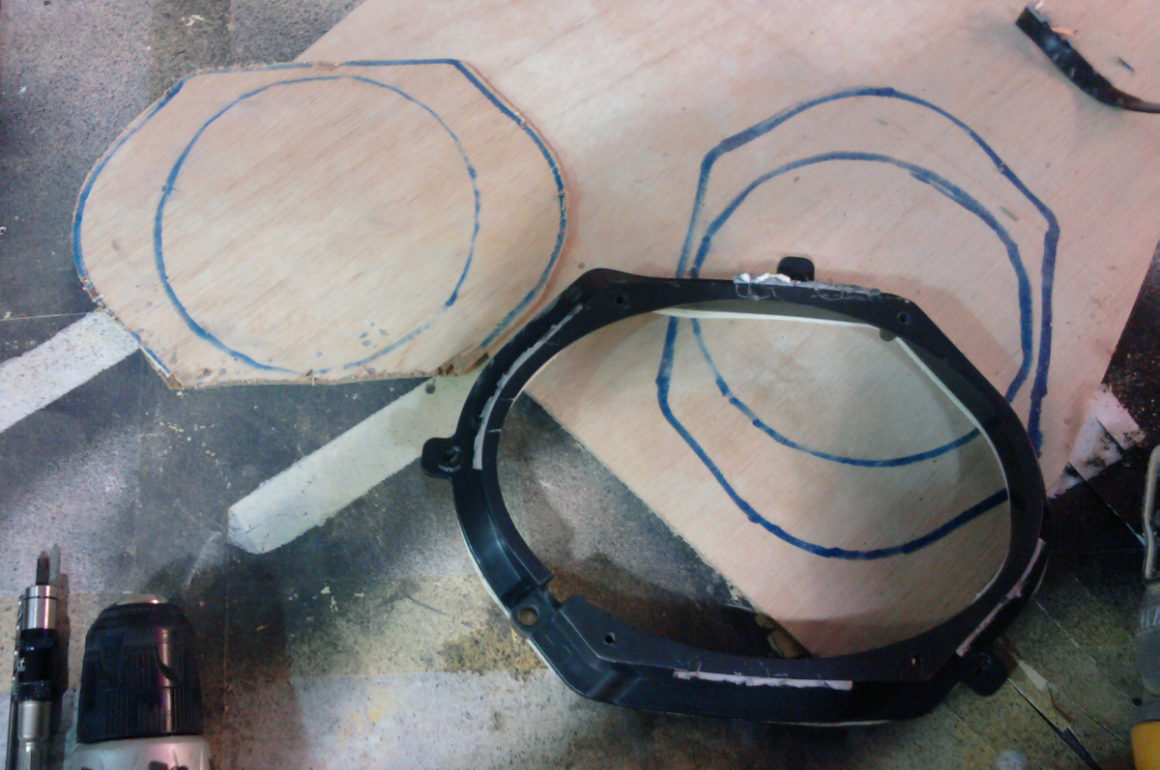











1 comment
Just took delivery of a new Mustang…how did you remove the ugly yellow and white sun visor labels without leaving a residue or otherwise leaving a “shadow” from where the sticker was? My sun visor is fabric, which yours obviously is as well. Posts on the Mustang forum all say it is impossible, but you have obviously accomplished it with perfect results, as visible on your photos. Thanks very much!